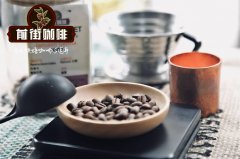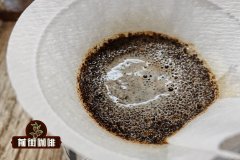What is the coffee washing method introduced by the Dutch? Treatment steps of coffee washing method and semi-washing method
◎ washing method
Because of the lack of sufficient sunshine in the West Indies, the Dutch introduced "WIB" West Indische Bereiding around 1740, which is different from the traditional sunbathing method, also known as "OIB" Oost Indische Bereiding. Coffee beans exported from Java are often marked with "WIB", which means washed beans.
The treatment steps of the washing method are as follows:
(1) choose beans:
When the harvested fruit is placed in a water tank and soaked for about 24 hours, the ripe fruit will sink, while the unripe or overripe fruit will float up and can be removed.
(2) remove the pulp:
Use a machine to remove the peel and pulp, leaving only the coffee beans wrapped with endocarp Parchment. At this time, there is a mucous membrane on the outer surface of the beans. The process of washing is to remove this mucous membrane.
(3) fermentation:
The adhesion of mucous membrane is very strong, and it is not easy to remove. It must be kept in the slot for about 18-36 hours.
To ferment and decompose the mucous membrane.
There are two ways of fermentation, namely Wet Fermentation fermentation and dry fermentation Dry Fermentation. As the name implies, dry fermentation has added water while dry fermentation has no water.
There are special changes in the seed and internal pulp during fermentation, which is one of the steps that most affect the flavor of coffee. Some farms add hot water or enzymes to speed up the fermentation, which will have a negative impact on the quality. It is not popular with selected coffee lovers.
Sigri, a famous coffee farm in Papua New Guinea, prides itself on its unique washing method. Their fermentation period is maintained at 3 days and is washed with dry water every 24 hours, thus producing a delicious coffee Sigri Coffee.
(4) washing:
Farms that use the washing method must build washing ponds and be able to introduce an endless supply of running water. During the treatment, the fermented beans are put into the pool and passed back and forth, using the friction of the beans and the power of running water to wash the coffee beans until smooth and clean.
(5) drying:
After washing, the coffee beans are still wrapped in the pericarp, and the moisture content up to 50% must be dried so that the moisture content is reduced to 12%, otherwise it will continue to ferment, mildew and rot.
A better treatment is to use sunlight to dry it will take 1-3 weeks, but the flavor is very good. In addition, some places use machines to dry, greatly shorten the processing time, so that the flavor is not as good as the sun-dried coffee.
(6) shelling:
The dried beans can be stored in the warehouse or handed over to the factory for shelling to remove endocarp and silver film.
(7) selection and grading:
Like the sun-drying method, washed coffee beans are selected and graded to remove defective beans and ensure better quality, which are then handed over to exporters to sell around the world.
◎ semi-washed or semi-dry
Recently, some farms in Brazil have begun to introduce semi-washing treatment, in which coffee beans, which have been removed from exocarp but still covered with silver film and endocarp, are dried directly in the sun without fermentation.
Mandenin coffee in Sumatra, Indonesia is also semi-washed, drying the fruit in the sun (the same sun drying method), and then washing off the exocarp with hot water, so that the seeds can be fully fermented in the pulp to produce coffee that is calm and mellow.
Since there are many changes in the semi-washing method, should it be called "semi-washing"? Or "semi-dry"? So far, there is no unified statement.

Important Notice :
前街咖啡 FrontStreet Coffee has moved to new addredd:
FrontStreet Coffee Address: 315,Donghua East Road,GuangZhou
Tel:020 38364473
- Prev

What are the ways of handling raw coffee beans? A list of specific steps of solarization treatment
In the treatment of ◎ coffee beans, the harvested fruit must immediately enter the processing process, otherwise it will begin to ferment and make the coffee beans smell. The treatment methods can be summarized into two kinds, which are "solarization" Sun Dry and "water washing" Washing, which will create different flavors. Sun-cured beans have a complete natural mellow flavor of Full Body, gentle
- Next

How's the coffee at Isner Manor in Guatemala? Isner Manor Coffee Award record
Isner Manor is located in the town of La Democracia in the northwest of Guatemala, almost close to the border between Mexico and Guatemala. This is a very high-altitude farm with a wide range of elevations. Coffee trees are planted from 1443 to 1900 meters, with an annual rainfall of about 1500 mm.
Related
- Beginners will see the "Coffee pull flower" guide!
- What is the difference between ice blog purified milk and ordinary milk coffee?
- Why is the Philippines the largest producer of crops in Liberia?
- For coffee extraction, should the fine powder be retained?
- How does extracted espresso fill pressed powder? How much strength does it take to press the powder?
- How to make jasmine cold extract coffee? Is the jasmine + latte good?
- Will this little toy really make the coffee taste better? How does Lily Drip affect coffee extraction?
- Will the action of slapping the filter cup also affect coffee extraction?
- What's the difference between powder-to-water ratio and powder-to-liquid ratio?
- What is the Ethiopian local species? What does it have to do with Heirloom native species?

